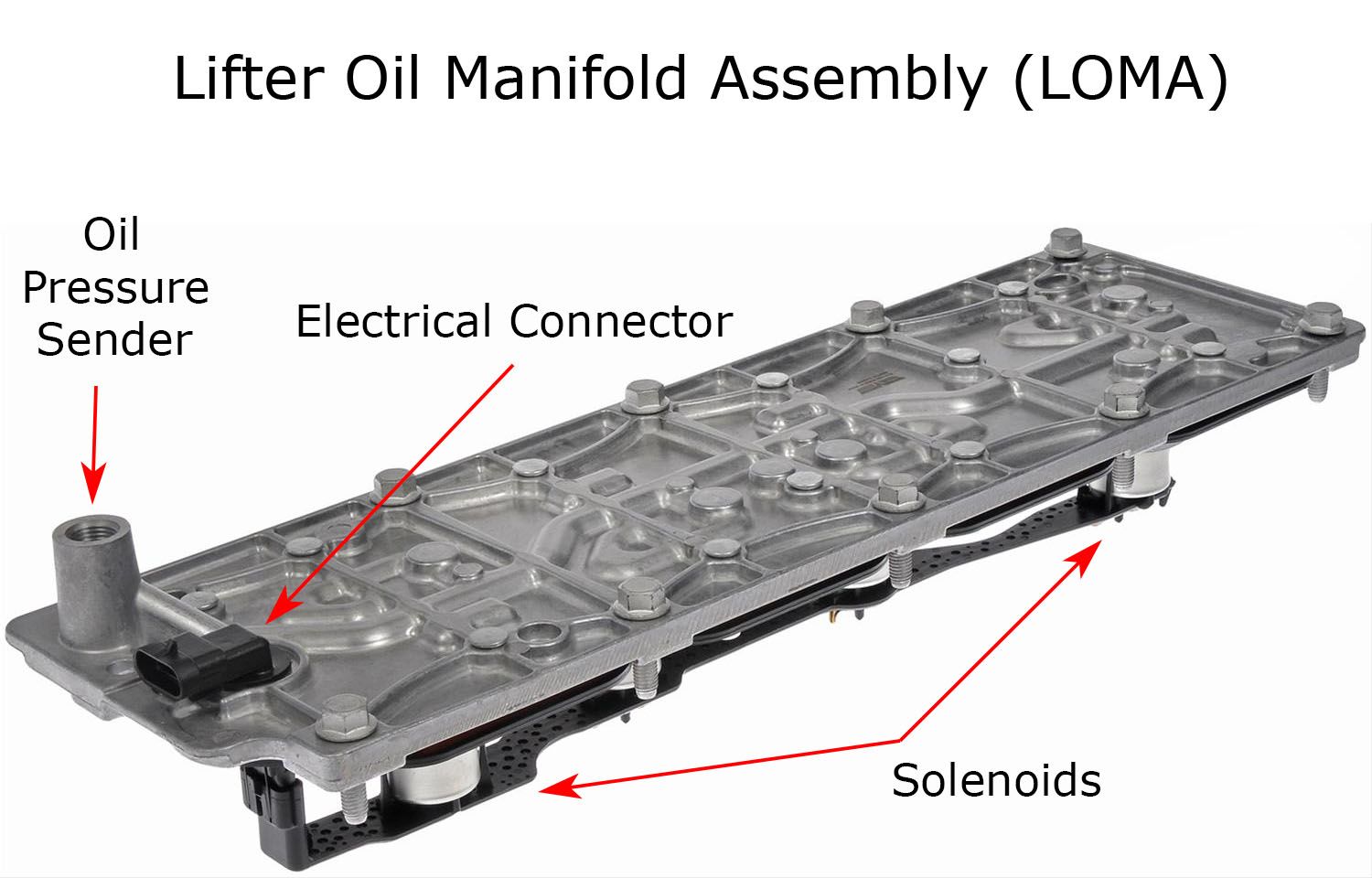Rev Up Your Savings: A Guide to Chevy Active Fuel Management (AFM)
If you are a Chevy owner or enthusiast, you might have heard about Active Fuel Management (AFM) and its benefits. In this comprehensive guide, we will delve into the details of Chevy’s Active Fuel Management system, how it works, common issues, and solutions.
Understanding Chevy Active Fuel Management (AFM):
In today’s world, fuel efficiency is a top concern for drivers. Car manufacturers are constantly innovating ways to squeeze more miles out of every gallon. One such technology is Chevy Active Fuel Management (AFM), also known as cylinder deactivation or variable displacement technology.
This system, developed by General Motors, is designed to improve fuel economy by shutting down half of the cylinders in your Chevy engine under certain driving conditions. Let’s delve deeper into the history of AFM and explore how it works to enhance your driving experience.
A Brief History of GM’s AFM Development:
General Motors introduced AFM in the early 2000s as a way to improve the fuel efficiency of their V6 and V8 engines without sacrificing power. The first iteration of AFM was a significant step forward, but GM engineers haven’t stopped there. Over the years, they’ve continuously refined the technology, making it more seamless and efficient.
For instance, in 2018, GM introduced Dynamic Fuel Management, an advanced version of AFM. This system allows for the deactivation of various cylinder combinations, further optimizing fuel economy while maintaining a smooth driving experience.
By understanding the evolution of AFM, we gain a deeper appreciation for its potential benefits and the ongoing commitment of GM to improve this innovative technology.
How Does Chevy AFM Work?
Chevy Active Fuel Management (AFM) works like a built-in fuel-saving switch for your engine. Here’s a breakdown of the magic behind it:
Deactivating Cylinders on Demand:
Imagine you’re cruising down the highway on a flat stretch. Your Chevy doesn’t need all its muscle to maintain speed. That’s when AFM steps in. The engine control module (ECM), the brain of your engine, detects the light load and sends a signal to the lifter oil manifold assembly (LOMA).
The LOMA houses special valve lifters. These lifters are different from standard lifters because they can be hydraulically controlled. When the ECM gives the go-ahead, the LOMA directs oil flow to these special lifters.
The oil pressurizes an internal mechanism within the lifter, essentially collapsing it. This collapsed state prevents the lifter from pushing on the pushrod, which in turn keeps the valves for that cylinder closed. With both intake and exhaust valves shut, no air or fuel enters or exits the cylinder, effectively taking it out of commission.
Dynamic Fuel Management: A Leap Forward :
Introduced in 2018, Dynamic Fuel Management (DFM) represents a significant advancement over the original AFM. Developed in collaboration with Tula Technology, DFM offers greater flexibility. Unlike AFM, which typically deactivates the same set of cylinders, DFM can shut down various cylinder combinations depending on driving conditions.
This allows for more precise adjustments to engine power output, optimizing fuel economy across a wider range of scenarios. Additionally, DFM can deactivate cylinders more quickly and seamlessly, further enhancing the driving experience.
By combining the core principles of AFM with the adaptability of DFM, Chevy engineers have created a system that provides both impressive fuel savings and a smooth, responsive ride.

Benefits of Chevy AFM: Saving Fuel and Potentially More
Chevy’s Active Fuel Management (AFM) boasts several advantages for drivers and the environment. Let’s explore these benefits in detail:
1. Enhanced Fuel Economy:
The primary benefit of AFM is its ability to improve fuel efficiency. By shutting down cylinders during light load situations, AFM can significantly reduce the amount of fuel your engine consumes. Estimates suggest that AFM can deliver improvements between 2% and 6% in fuel economy depending on driving conditions.
However, it’s important to remember that these are estimates. Real-world fuel savings can vary based on factors like driving habits, terrain, and highway vs. city driving. Aggressive acceleration or frequent towing will likely lessen the impact of AFM.
2. Reduced Emissions:
Since AFM helps your engine use less fuel, it also translates to a reduction in harmful emissions. This is a win for the environment as it contributes to cleaner air and a smaller carbon footprint.
3. Potential for Extended Engine Life (Debate Exists):
There’s an ongoing debate regarding the impact of AFM on engine longevity. The logic suggests that by reducing the workload on half the engine’s cylinders, AFM could potentially minimize wear and tear, leading to a longer engine lifespan.
However, some argue that the constant switching on and off of cylinders might place additional stress on certain components. Proper maintenance using the recommended oil type is crucial for optimal AFM operation and potentially maximizing engine life.
Overall, AFM offers a compelling package of benefits, particularly for drivers who prioritize fuel efficiency and eco-friendly driving.
Drawbacks of Chevy AFM: Weighing the Trade-Offs
While Chevy’s Active Fuel Management (AFM) offers impressive fuel-saving potential, it’s not without its drawbacks. Let’s consider some of the limitations to be aware of:
1. Potential Power Loss During Deactivation:
When AFM kicks in and deactivates cylinders, you might experience a slight decrease in engine power. This is noticeable in situations where you need immediate acceleration, such as merging onto a highway. While the power reduction is typically minor, it can be a concern for drivers who value a consistently peppy response from their Chevy.
2. Shudder or Vibration:
Some drivers report feeling a slight shudder or vibration when AFM engages or disengages. This can be attributed to the engine transitioning between using all cylinders and half. While engineers strive to make the process seamless, some may perceive these subtle shifts.
3. The Sound Factor (Especially with Aftermarket Exhaust):
A unique drawback of AFM is the change in engine sound. When a V8 engine is operating on only 4 cylinders, the exhaust note can become noticeably different. This might be a minor detail for some, but for drivers who enjoy the traditional roar of a V8, the altered sound, particularly with an aftermarket exhaust system, might be a turnoff.
Finding the Right Balance:
Ultimately, the drawbacks of AFM need to be weighed against its benefits. If fuel efficiency is your top priority, AFM’s advantages likely outweigh the potential for slight power reduction or a change in engine sound. However, if you prioritize uncompromised power and a specific engine sound, AFM might not be the ideal fit.
Disabling Chevy AFM: To Do or Not To Do?
While Chevy’s Active Fuel Management (AFM) offers fuel economy benefits, some drivers choose to disable the system altogether. Let’s delve into the reasons behind this choice and explore the methods involved, alongside the legal and environmental considerations.
Why Disable AFM? :
There are several reasons why some drivers opt to disable AFM:
- Power Preference: Drivers who prioritize uncompromised power delivery might find the slight power decrease during AFM deactivation unacceptable. Disabling AFM ensures full engine power is always available.
- Shudder or Vibration: If the occasional shudder during AFM engagement/disengagement is particularly bothersome, disabling the system eliminates this sensation.
- Sound Concerns: Drivers who enjoy the traditional sound of their engine, especially with aftermarket exhaust systems, might prefer the consistent roar over the altered sound during AFM operation.
Methods for Disabling AFM:
There are two primary methods for disabling AFM:
- Tuning: Performance shops can offer ECU tuning that essentially reprograms the engine control module (ECM) to permanently disable AFM.
- Lifter Replacement: Replacing the special AFM lifters with standard lifters physically prevents the system from deactivating cylinders.
Important Considerations:
Before disabling AFM, it’s crucial to weigh the potential drawbacks:
- Legality: In some regions, particularly those with strict emission regulations like California , disabling AFM might be illegal. It’s essential to check your local regulations to avoid legal trouble.
- Environmental Impact: AFM helps reduce fuel consumption and emissions. Disabling it will negate these environmental benefits and potentially contribute to increased pollution.
- Warranty: Disabling AFM might void your vehicle’s powertrain warranty. Be sure to understand the warranty implications before proceeding.
The choice to disable AFM is a personal one. If fuel efficiency isn’t a top priority and the drawbacks outweigh the benefits for you, then disabling AFM might be a viable option. However, it’s crucial to carefully consider the legal, environmental, and warranty implications before making this decision.
Maintenance and Care Tips for Chevy AFM Engines: Keeping Your Ride Running Smooth
To ensure your Chevy’s Active Fuel Management (AFM) system functions optimally and delivers its fuel-saving benefits, proper maintenance is key. Here are some crucial tips to keep in mind:
1. Oil is King: Using the Right Formula
AFM relies on special hydraulic lifters to deactivate cylinders. These lifters require specific oil properties to function correctly. Using the wrong oil type or viscosity can compromise AFM performance and potentially lead to premature wear and tear.
Always consult your owner’s manual for the exact oil type and viscosity recommended by Chevy for your specific engine. These recommendations are formulated to ensure optimal lubrication and smooth operation of the AFM lifters.
Generally, GM recommends dexos-approved synthetic or semi-synthetic oils for AFM engines. These oils offer superior lubrication properties and withstand higher operating temperatures compared to conventional oils.
2. Sticking to the Schedule: Regular Maintenance Matters
Following the recommended maintenance schedule outlined in your Chevy owner’s manual is essential for the overall health of your engine, including the AFM system. Here are some key maintenance services to prioritize:
- Oil Changes: Regular oil changes are vital to maintain clean oil and prevent harmful deposits from accumulating within the AFM lifters. Follow the recommended intervals as specified in your manual, which may be more frequent than conventional engines due to the added complexity of AFM.
- Air Filter Replacement: A clean air filter ensures optimal airflow into the engine, which is crucial for efficient combustion. A clogged air filter can negatively impact fuel economy and potentially affect AFM operation.
- Spark Plug Changes: Fresh spark plugs ensure proper ignition and efficient fuel burn. Worn spark plugs can lead to incomplete combustion and put additional strain on the engine, potentially impacting AFM functionality.
By adhering to a consistent maintenance routine and using the recommended oil, you can help your Chevy’s AFM system operate smoothly and efficiently for years to come.
Who Should Consider Chevy AFM? Finding the Perfect Fit
Chevy’s Active Fuel Management (AFM) offers a compelling fuel-saving technology, but it’s not a one-size-fits-all solution. Here’s a breakdown of who might benefit most from AFM:
Fuel Efficiency Champions:
- Eco-Conscious Drivers: If fuel economy and minimizing your environmental impact are top priorities, then AFM is a great choice. It helps you get more miles per gallon and reduces emissions, making you a greener driver.
- Highway Cruisers: AFM shines on long highway stretches where your Chevy maintains a steady speed without demanding full engine power. This allows AFM to deactivate cylinders for significant fuel savings.
Keep in mind: If you frequently tow heavy loads, engage in aggressive driving, or prioritize uncompromised power delivery, then AFM might not be the best fit. The slight power decrease during deactivation might be more noticeable under these conditions.
Finding the Right Chevy Model:
When considering a Chevy with AFM, some models are particularly well-suited for this technology. Look for vehicles equipped with V6 or V8 engines, as AFM is primarily used on these larger displacement engines to maximize its fuel-saving potential. Here are some popular fuel-efficient Chevy models that often feature AFM:
- Malibu
- Equinox
- Traverse
- Tahoe
- Silverado 1500 (light-duty)
By understanding your driving habits and priorities, you can determine if a Chevy with AFM aligns with your needs.

Credit: help.summitracing.com
Identifying Engines with AFM
Not sure if your Chevy vehicle has Active Fuel Management? Look out for signs such as improved fuel economy during highway driving or the ability to monitor cylinder activation through the vehicle’s onboard computer system.
Common Issues with AFM
- Lifter failures
- Misfire issues
- Dynamic Fuel Management concerns
Cost of AFM Disablers
| Retailer | Price |
|---|---|
| Amazon.com – Seller | $59.99 |
| Summit Racing | $410.10 |
| AMS Racing | $79.00 |
| eBay – ejcperformance | $79.95 |
Frequently Asked Questions
What Is Active Fuel Management On Chevy?
Active Fuel Management on Chevy is a General Motors engine technology that shuts down half of the engine’s cylinders to improve fuel efficiency. It is also known as Cylinder Deactivation and can be turned off with an AFM/DFM Disabler. Some Chevy models with AFM include the Camaro, Tahoe, TrailBlazer, Avalanche, Silverado, Suburban, and Impala.
Can Active Fuel Management Be Turned Off?
Yes, Active Fuel Management can be turned off through an AFM/DFM disabler or oil pump modification.
What Gm Vehicles Have An Afm?
The GM vehicles equipped with Active Fuel Management (AFM) include Chevrolet Camaro, Tahoe, TrailBlazer, Avalanche, Silverado, Suburban, and Impala.
Is Afm The Same As Cylinder Deactivation?
Active Fuel Management (AFM) and cylinder deactivation are the same engine technology by General Motors.
Conclusion
Understanding Chevy Active Fuel Management is crucial for maintaining your vehicle’s performance and efficiency. Whether you choose to keep AFM enabled or disable it, make an informed decision based on your driving needs and preferences.


